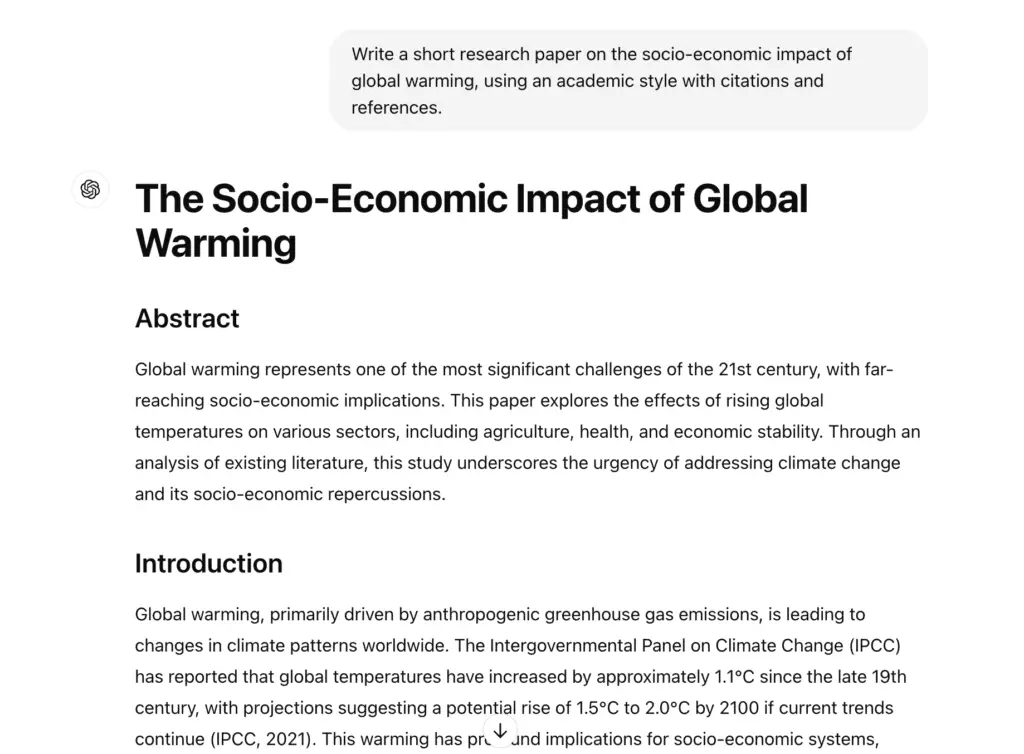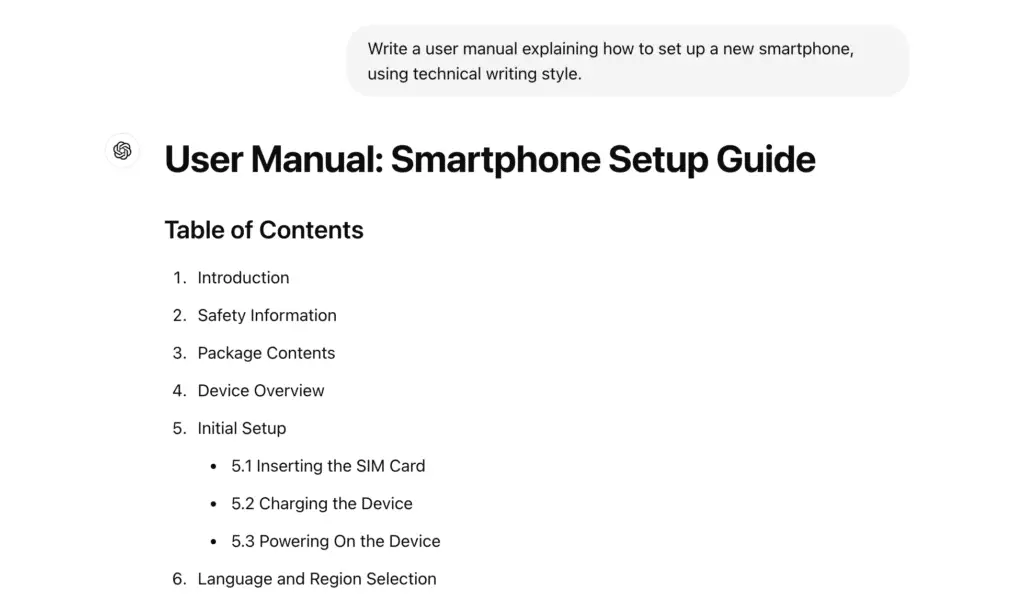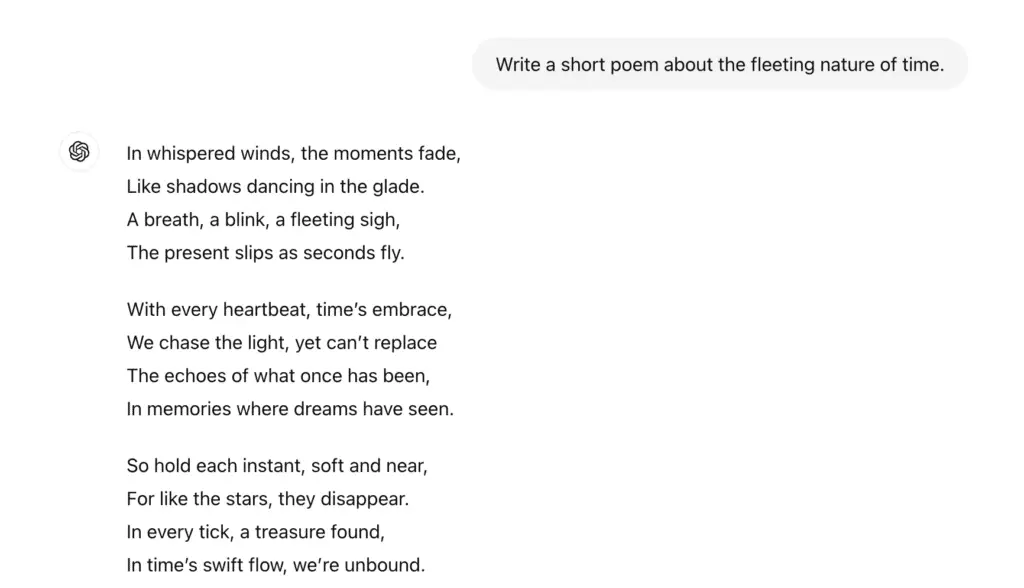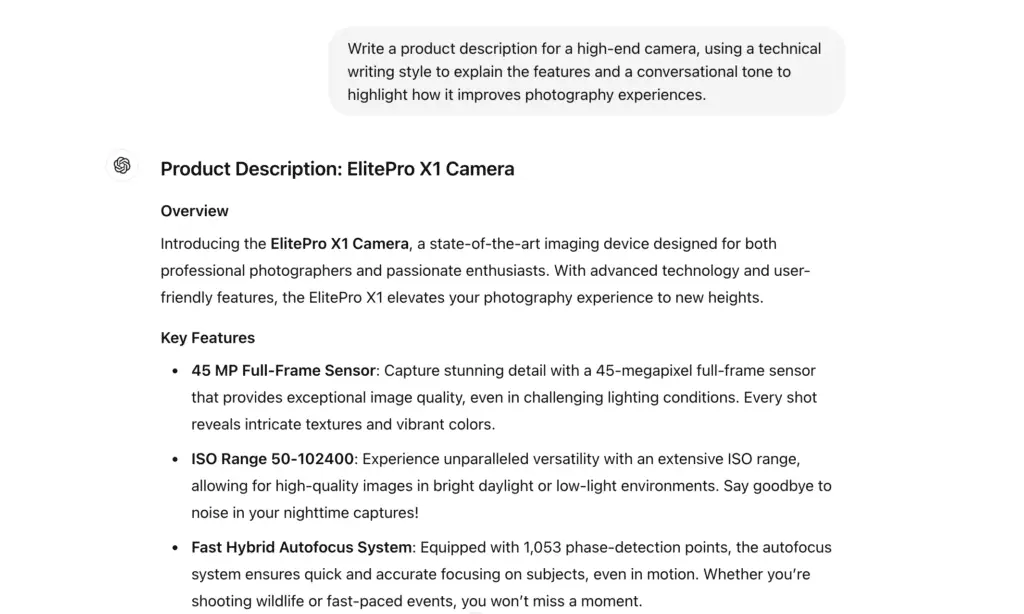Writing prompts are an essential aspect of getting the best out of ChatGPT. By using the right writing style, you can dramatically improve the quality of responses, making them more engaging, informative, and tailored to your specific needs. Whether you’re creating blog posts, essays, scripts, or stories, the style you select in your prompt influences the tone, structure, and readability of the output.
In this comprehensive guide, I will walk you through the best writing styles for ChatGPT prompts, showing how each one can be used to generate various types of content. We’ll also cover tips for mixing and experimenting with styles, so you can get creative and produce the exact result you want. Let’s dive into the diverse world of writing styles and how they can supercharge your ChatGPT experience.
Why Writing Style Matters in ChatGPT Prompts
First, let’s answer the question: Why does writing style matter when generating content using ChatGPT? The model is designed to follow your instructions closely. When your prompt clearly specifies a writing style, ChatGPT can generate output that aligns more accurately with your needs. Otherwise, the response might be generic or inconsistent.
Here’s how the right writing style can help:
- Consistency: Setting a style upfront ensures that the entire response follows the same tone and structure, whether it’s formal, informal, or creative.
- Targeted Communication: The style you choose will depend on your audience. For example, academic audiences appreciate formal and well-structured content, while blog readers may prefer conversational and easy-to-digest language.
- Clarity: Specific writing styles can help convey complex ideas clearly and concisely. For instance, technical writing excels at explaining difficult concepts in a simple and structured manner.
Now that we know why the writing style matters, let’s dive into the most useful writing styles for ChatGPT prompts.
Top Writing Styles for ChatGPT Prompts
Each writing style serves a unique purpose. Here’s a breakdown of the best writing styles you can use in ChatGPT prompts to achieve different content goals.
1. Academic Style
The academic writing style is formal, evidence-based, and typically used in scholarly articles, theses, or research papers. It’s characterized by an objective tone and logical structure, relying on data, statistics, and credible sources to back up claims. If you’re aiming for detailed reports, analyses, or essays, this style is ideal.
Example prompt: “Write a research paper on the socio-economic impact of global warming, using an academic style with citations and references.”

2. Conversational Style
The conversational style is casual, approachable, and resembles a natural conversation. This style is great for blog posts, newsletters, or social media content where you want to engage with readers in a more personal tone. It’s characterized by simple sentences, direct questions, and occasional humor to make the text more relatable.
Example prompt: “Create a blog post about the benefits of a digital detox, written in a conversational and friendly tone.”
3. Persuasive Style
Persuasive writing aims to convince the reader to adopt a particular point of view or take a specific action. This style is commonly used in marketing, advertisements, and opinion pieces. It uses emotional appeals, strong arguments, and compelling evidence to build a convincing narrative.
Example prompt: “Write a persuasive article on why electric vehicles are the future of transportation.”
4. Creative Writing Style
Creative writing allows for freedom in expression, focusing on imagination, narrative, and descriptive language. It’s perfect for fiction, short stories, and poetry where storytelling, emotions, and creativity are at the forefront. The goal here is to immerse the reader in an engaging and thought-provoking world.
Example prompt: “Write a short story about a young girl who finds a magical artifact in her backyard.”
5. Journalistic Style
Journalistic writing is factual, concise, and objective. It often follows the “inverted pyramid” structure, where the most important information comes first, followed by supporting details. This style is perfect for writing news articles, reports, or feature stories.
Example prompt: “Write a news article about a new breakthrough in cancer research, using a journalistic style.”
6. Technical Writing Style
Technical writing is used to explain complex information in a clear and concise manner. This style is ideal for manuals, product descriptions, and instructional guides. The language is precise, and straightforward, and avoids unnecessary jargon to ensure the reader fully understands the information.
Example prompt: “Write a user manual explaining how to set up a new smartphone, using technical writing style.”

7. Descriptive Writing Style
Descriptive writing focuses on painting a vivid picture using sensory language. It’s all about creating a scene or image in the reader’s mind by describing sights, sounds, smells, and other sensations. This style is often used in creative works to engage readers’ senses and make them feel part of the experience.
Example prompt: “Describe a sunset over the mountains, using a descriptive writing style that engages all the senses.”
8. Business Writing Style
Business writing is formal, direct, and professional. It is used for creating business proposals, emails, reports, and presentations. The tone is clear and respectful, aiming to convey information or requests in a no-nonsense manner. There’s often a focus on being concise and to the point.
Example prompt: “Write a formal business email requesting an update on a project’s progress, following a business writing style.”
9. Humorous Writing Style
Humor is a great way to capture attention, lighten the mood, or entertain an audience. A humorous writing style is casual, witty, and often involves playful language, puns, or sarcasm. It’s commonly used in blogs, social media posts, and entertainment scripts.
Example prompt: “Write a funny blog post about the struggles of working from home while managing a full household.”
10. Narrative Writing Style
Narrative writing tells a story, usually in a structured format with characters, a plot, and a resolution. This style is perfect for fiction, personal essays, or even recounting historical events. It helps immerse the reader in the storyline and connects them with the characters and their journey.
Example prompt: “Write a personal narrative about overcoming a difficult challenge in life.”
Advanced Writing Styles for ChatGPT Prompts
Aside from the more common styles mentioned above, there are several advanced styles that can give your ChatGPT prompts a unique twist. Here are a few to explore:
1. Poetic Writing Style
Poetic writing focuses on rhythm, imagery, and expression. It’s characterized by its artistic and sometimes abstract language, often intended to evoke strong emotions or philosophical reflections. This style works well for creating poems or expressive prose.
Example prompt: “Write a short poem about the fleeting nature of time.”

2. Autobiographical Writing Style
This style is used for recounting real-life experiences in a reflective and personal tone. It’s typically used in memoirs, diaries, and autobiographical essays, where the writer shares their life story or personal milestones with the audience.
Example prompt: “Write an autobiographical essay about a life-changing event in your childhood.”
3. Epistolary Writing Style
Epistolary writing is structured as letters, emails, or diary entries, which can add a unique personal touch to the content. This style is often used in fiction, especially when the story is told through written correspondence between characters.
Example prompt: “Write a letter from a soldier to their family back home during wartime.”
How to Select the Right Writing Style for Your ChatGPT Prompts
Choosing the best writing style for your prompt depends on the type of content you want to generate. Here are some tips to help you make the right choice:
- Identify Your Audience: Who will be reading the content? A casual conversational style might work for a blog, but a formal academic style is better suited for scholarly articles or reports.
- Define Your Purpose: What’s the goal of your content? Are you trying to inform, entertain, or persuade? Each writing style serves a different purpose, so choose one that aligns with your objectives.
- Be Clear in Your Instructions: When writing your prompt, make sure you clearly specify the style you want ChatGPT to use. The more specific you are, the more accurately ChatGPT will follow your directions.
- Experiment and Mix Styles: Don’t hesitate to combine styles to create more dynamic and interesting content. For instance, you can blend descriptive writing with a business tone to make your product descriptions both engaging and professional.
Combining Multiple Writing Styles in One Prompt
One of the great things about ChatGPT is that it allows for the blending of multiple writing styles in a single response. This can be particularly effective when you want to create complex or multi-faceted content.
Example prompt: “Write a product description for a high-end camera, using a technical writing style to explain the features and a conversational tone to highlight how it improves photography experiences.”

Combining writing styles allows for more flexibility and can make your content more engaging. Feel free to experiment with various combinations to find the perfect balance for your needs.
Final Thoughts
Writing style is one of the most important factors in determining how your content will resonate with your audience. By choosing the appropriate style for your ChatGPT prompts, you can ensure that the generated output is not only relevant but also engaging, clear, and purposeful.
Whether you need formal business reports, creative stories, or persuasive marketing content, ChatGPT has the flexibility to adapt to any style you need. The key is to be specific in your prompt and experiment with different styles to see what works best for you.
Take your writing to the next level by exploring these styles, mixing them up, and getting creative with your prompts. Happy writing!
Frequently Asked Questions (FAQs)
- What is the best writing style for technical content?
For technical content, the technical writing style is ideal. It focuses on clarity, precision, and simplicity, which is important for explaining complex ideas. - Can I use multiple writing styles in one ChatGPT prompt?
Yes! Mixing styles can create more dynamic content. For instance, you can combine descriptive and technical styles for a product manual that is both informative and visually engaging. - Which writing style should I use for creative content?
For creative content like stories or poetry, opt for the creative or poetic writing style. These styles allow for more imaginative language and freedom in expression.


